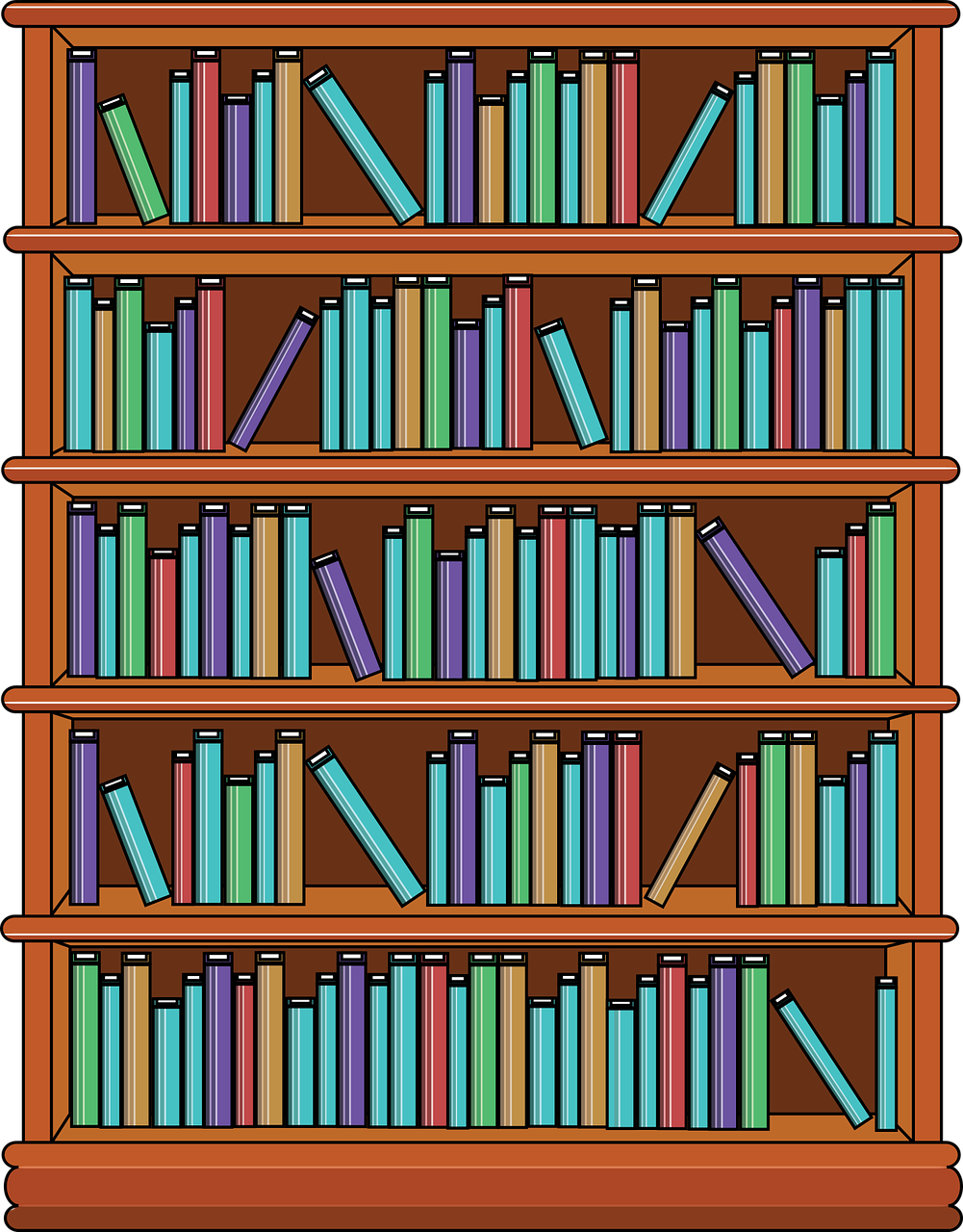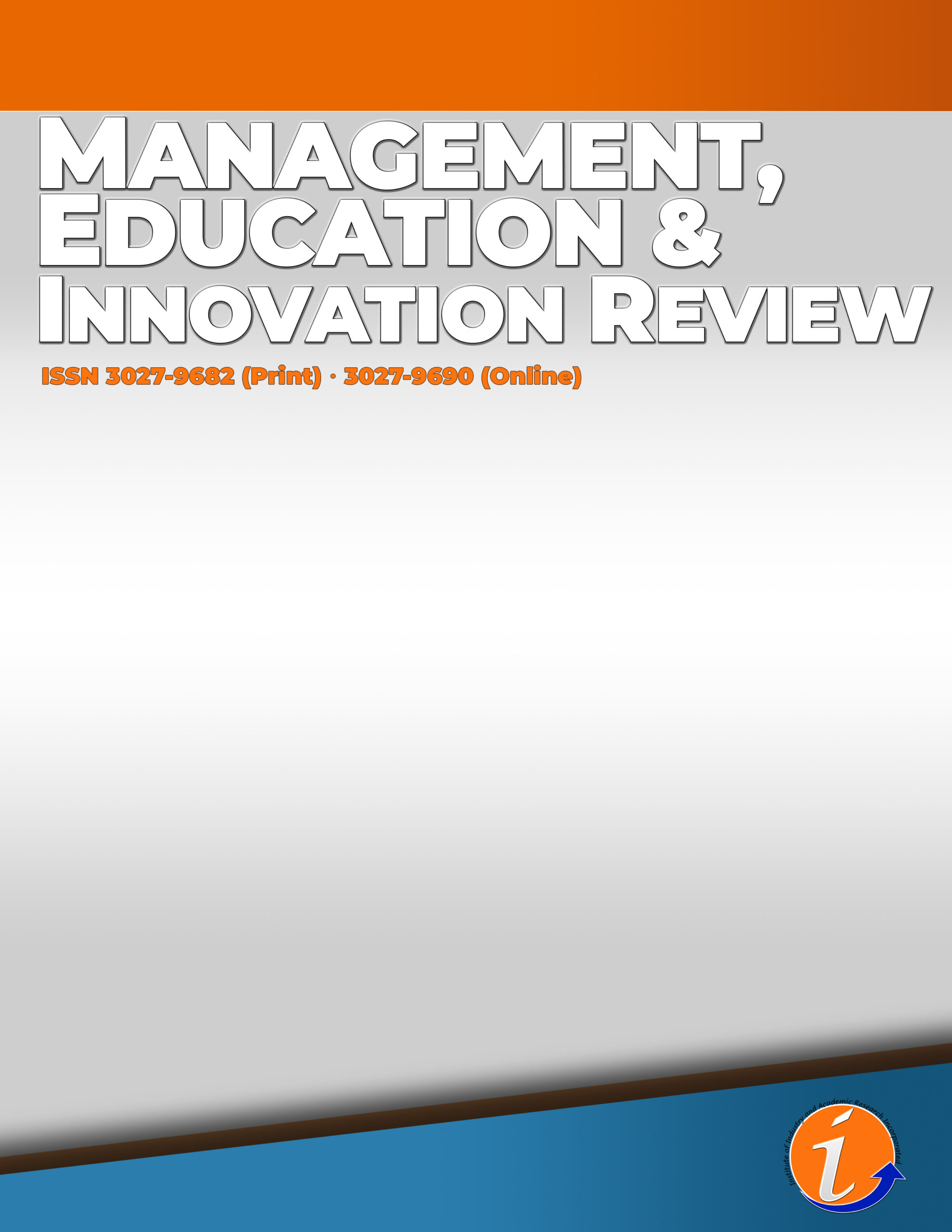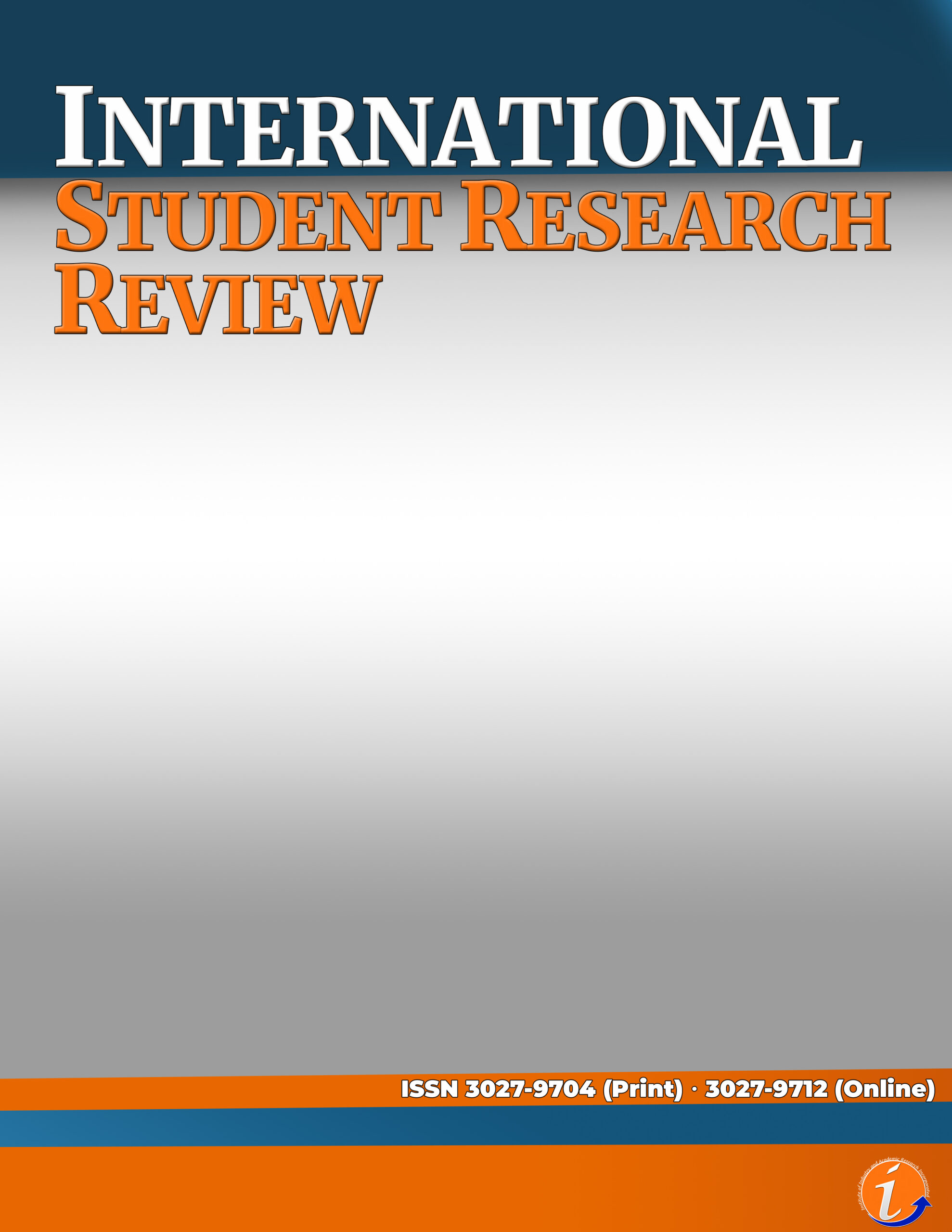Abstract
The study identified the seven kindergarten teachers’ experiences and practices employed in a play-friendly classroom for kindergarten pupils in the District of Nabas, Aklan. It employed phenomenological research and used semi-structured interview guide questions along with a Focus Group Discussion (FGD) to gather the needed data. It was found that the teachers employed various play-friendly classroom practices and valued their importance to the teaching-learning process. The specific activities employed by the teachers include: play dough, dress-up, role-play, drawing, jigsaws, puzzles, shape sorters, painting blocks, table blocks, and sorting things are manipulative toys. Teachers also provided play places such as Bahay Kubo, sand play, water play, a toy area, a playing area, and a reading area. Other practices were done through worksheets, workbooks, flashcards, and multimedia videos. Most often, the activities were taken from the Department of Education’s Kindergarten Development Curriculum, DepEd Portal, and training attended by the teachers, but various difficulties in implementing them still need to be considered. Kindergarten teachers suggested that these play-friendly classroom practices should have a play-based learning center, an updated play-based curriculum, and a project campaign where the school or Department of Education may help kindergarten schools get funding from the private and public sectors. Kindergarten teachers should also obtain extra training, developing or designing new plays or games in all competencies, and integrating with other learning domains, especially in kindergarteners’ least taught abilities. Teachers should develop a contextualized program of play-friendly practices suited to the personalities and needs of their pupils, and there should be more in depth training for Kindergarten teachers so that they know what to do and are confident in how to teach their pupils.
Keywords: Parents’ Involvement, Academic Performance, Family Participation Questionnaire, Spearman’s Rank Correlation
*This paper is presented at the 4th International Conference on Multidisciplinary Industry and Academic Research (ICMIAR) 2023
References
Allee-Herndon, K. A., & Roberts, S. K. (2020). The Power of Purposeful Play in Primary Grades: Adjusting Pedagogy for Children’s Needs and Academic Gains. Journal of Education, 201(1), 54–63. https://doi.org/10.1177/0022057420903272
Ashiabi, G. (2007). Play in the preschool classroom: its socioemotional significance and the teacher’s role in play. Early Childhood Education Journal, 35(2), 199-207.
Bodrova, E., & Leong, D. J. (2007). Tools of the mind: The Vygotskian approach to early childhood education (2nd ed.). Upper Saddle River, NJ: Pearson.
Brownson, R. C. (2010). Translating epidemiology into policy to prevent childhood obesity: the case for promoting physical activity in school settings. Annuals of Epidemiology, 20(6), 436-444.
Bubikova-Moan, J., Hanne Næss, H., and Wollscheid, S. (2019). “ECE Teachers’ views on play-based learning: a systematic review. Eur. Early Child. Educ. Res. J. 27, 776–800. doi: 10.1080/1350293X.2019.1678717
Bruce, T. (2012). The whole child. Play. In T. Bruce (Ed.), Early childhood practice: Froebel today (pp. 5–16). London, UK: SAGE Publication Ltd.
Darling-Hammond, L. (2006). Constructing 21st-century teacher education. J. Teach. Educ. 57, 300–314. doi: 10.1177/0022487105285962
Dewey, J. (1910). How we think. Boston: D.C. Heath& Co Publishers. Retrieved from https://openlibrary.org/books/OL7236952M/How_we_think.
Fantuzzo, J. W., and Hampton, V. R. (2000). “Penn interactive peer play scale: A parent and teacher rating system for young children,” in Play Diagnosis and Assessment, 2nd Edn, eds K. Gitlin-Weiner, A. Sandgrund, and C. Schaefer (Hoboken: John Wiley), 599–620.
Frost, J. L, Wortham, S. C., &Reifel, S. (2008). Play and child development (Third ed.) Upper Saddle River NJ: Merrill Prentice Hall.
Giorgi, A. (1997). The theory, practice, and evaluation of the phenomenological method as a qualitative research procedure. Phenomenological Psychology, 28(2), 235-260.
Gonçalves, R., & Fonseca, M. A. (2016). Learning through Simultaneous Play: Evidence from Penny Auctions. Journal of Economics & Management Strategy, 25(4), 1040–1059. https://doi.org/10.1111/jems.12174
Gordon, N. S., Burke, S., Akil, H., Watson, S. J., and Panksepp, J. (2003). Socially-induced brain “fertilization”: play promotes brain derived neurotrophic factor transcription in the amygdala and dorsolateral frontal cortex in juvenile rats. Neurosci. Lett. 341, 17–20. doi: 10.1016/s0304-3940(03)00158-7
Hill, H. (2006). “Language matters: How characteristics of language complicate policy implementation,” in New directions in education policy implementation: Confronting complexity, ed. M. Honig (Albany: State University of New York Press).
Joshi, N., & Stone, M. (2021). Playing during a Pandemic: Why children need outdoor play more than ever. Healthy Populations Journal. https://doi.org/10.15273/hpj.v1i1.10581
MacKay, S. H. (2019). Teaching and learning: Starting with story workshop. Retrieved from https://opalschool.org/starting-with-story-workshop/
Maphosa, S. (2021). An Ecological Approach to the Implementation of Language-in-Education Policy: A Kalanga Case Study. Language Matters, 52(3), 4–25. https://doi.org/10.1080/10228195.2021.1970210
Marbina, L., Church, A., and Tayler, C. (2011). Victorian early years learning and development framework: Evidence paper: Practice principle 6: Integrated teaching and learning approaches. Parkville: University of Melbourne.
Miller, E., and Almon, J. (2009). Crisis in the Kindergarten: Why Children Need to Play in School. Maryland: Alliance for Childhood.
Murtagh, E. M., Sawalma, J., & Martin, R. (2022). Playful maths! The influence of play-based learning on academic performance of Palestinian primary school children. Educational Research for Policy and Practice. https://doi.org/10.1007/s10671-022-09312-5
Mukherji, P., &Albon, D. (2018). Research methods in early childhood. An introductory guide (3rd ed.). Thousand Oaks, CA: SAGE.
Nolan, A., &Paatsch, L. (2017). (Re)affirming identities: Implementing a play-based approach to learning in the early years of schooling. International Journal of Early Years Education,26(1), 4 – 55. https://doi.org/10.1080/09669760.2017.1369397.
Nicol, J., & Taplin, J. T. (2018). Understanding the Steiner Waldorf Approach. Early years education in practice (2nd ed.). London: Routledge. https://doi.org/10.4324/9781315456577
Nicholson, P., & Hendry, H. (2020). A pedagogical meeting place or a problem space? Extending play-based pedagogy in Year One. Education 3–13, 50(2), 184–196. https://doi.org/10.1080/03004279.2020.1840608.
Pellis, S. M., Pellis, V. C., and Himmler, B. T. (2014). How play makes for a more adaptable brain: a comparative and neural perspective. Am. J. Play 7:73.
Pyle, A., &Alaca, B. (2018). Kindergarten children’s perspectives on play and learning. Early Child Development and Care,188 (8), 1063-1075. https://doi.org/10.1080/03004430.2016.1245190.
Pyle, A., & Bigelow, A. (2014). Play in kindergarten: An interview and observational study in three Canadian classrooms. Early Childhood Education Journal,43(5), 385–393. https://doi.org/10.1007/s10643-014-0666-1.
Pyle, A., &Danniels, E. (2017). A continuum of play-based learning: The role of the teacher in play-based pedagogy and the fear of hijacking play. Early Education and Development,28(3), 274289. https://doi.org/10.1080/10409289.2016.1220771.
Pyle, A., & DeLuca, C. (2017). Assessment in play-based kindergarten classrooms: An empirical study of teacher perspectives and practices. The Journal of Educational Research,110(5), 457–466. https://doi.org/10.1080/00220671.2015.1118005.
Shen, L., Ma, J., Miao, Y., & Liu, H. (2019). Provably secure certificateless aggregate signature scheme with designated verifier in an improved security model. IET Information Security, 13(3), 167–173. https://doi.org/10.1049/iet-ifs.2018.5226
Van Haaften, T. (2015). Frans H. van Eemeren, Bart Garssen, Erik C.W. Krabbe, A. Francisca SnoeckHenkemans, Bart Verheij and Jean H.M. Wagemans: Handbook of Argumentation Theory. Argumentation, 30(3), 345–351. https://doi.org/10.1007/s10503-015-9381-3
Vogt, F., Hauser, B., Stebler, R., Rechsteiner, K., &Urech, C. (2018). Learning through play—Pedagogy and learning outcomes in early childhood mathematics. European Early Childhood Education Research Journal,26(4), 589–603. https://doi.org/10.1080/1350293X.2018.1487160.
Vygotsky, L. S., (1978). Mind in society. Cambridge, MA: Harvard University Press.
Warner, L. & Parker, W. F. (2005). “You’re it!”: thoughts on play and leaning in schools.
Weisberg, D. S., Hirsh-Pasek, K., &Golinkoff, R. M. (2013). Guided Play: Where Curricular Goals Meet a Playful Pedagogy. Mind, Brain, and Education, 7(2), 104–112. https://doi.org/10.1111/mbe.12015
Whitebread, D., Basilio, M., Kuvalja, M., and Verma, M. (2012). The Importance of Play. Belgium: Toy Industries of Europe.
World Health Organization [WHO] (2020). Improving early childhood development: WHO guideline. Geneva: World Health Organization.













